Gerald Ford's Role in the JFK Assassination Cover-Upby Don FulsomCrime Magazine Dec. 28, 2006 |
Popular 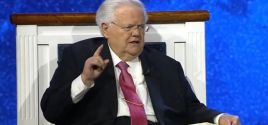
John Hagee Cheers Israel-Iran Battle as 'Gog and Magog War,' Will Lobby Congress Not to Deescalate
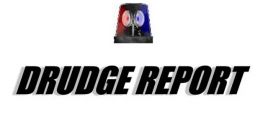
Right-Wing Media See Traffic Plummet in Wake of Algorithm Changes by Facebook, Google
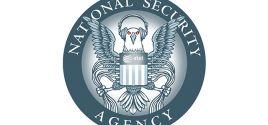
Patriot ACT on Steroids: FISA Bill Forces 'An Enormous Range' of Businesses to Act as NSA Spies
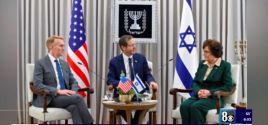
Congress Introduces ADL-Backed 'Countering Antisemitism Act' to Police Online Speech
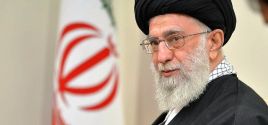
Reuters: Iran Gave 'Wide Notice' Days Before Attack on Israel
  Members of the Warren Commission present their report on the assassination of President John F. Kennedy. Members of the Warren Commission present their report on the assassination of President John F. Kennedy.L-R: John McCloy, J. Lee Rankin (General Counsel), Senator Richard Russell, Representative Gerald Ford, Chief Justice Earl Warren, President Lyndon B. Johnson, Allen Dulles, Senator John Sherman Cooper, and Representative Hale Boggs. Credit: LBJ Library photo by Cecil Stoughton At approximately 12:30 p.m. on Nov. 22 1963, in Dallas's downtown Dealey Plaza, a large and friendly crowd lined the street, cheering and waving excitedly at the approaching presidential motorcade. Riding in the third car an oversized Lincoln with its Plexiglas "bubble" top removed were President John F. Kennedy and his wife, Jackie, and Texas Gov. John Connally and his wife, Nellie. As the limousine carrying the Connallys and the Kennedys wound its way through the hospitable crowds, Nellie Connally turned to President Kennedy, who was seated behind her, and said, "Mr. President, you can't say Dallas doesn't love you." Then the shots rang out. Today, more than four decades later, the details on specifically how and by whom President Kennedy was assassinated are still open to question. According to the report of the Warren Commission, released in September 1964 after a full year investigation, one single shooter Lee Harvey Oswald killed Kennedy and wounded Gov. Connally by firing three bullets from the sixth floor of the Texas School Book Depository. The most significant documentary record of President Kennedy's assassination, however, is the famous 8mm home movie taken that day by Dallas dress manufacturer Abraham Zapruder. It seems to show Kennedy reeling from shots fired from more than one location. The film's apparent crossfire causes one to conclude that there were several gunmen and a conspiracy. The number of shots reportedly heard by witnesses ranges from two to more than eight. The most important eyewitness to the assassination was Gov. Connally. Questioned by Warren Commission counsel and now-U.S. Sen. Arlen Specter, Republican of Pennsylvania, Connally's testimony to the Warren Commission solidly supports the Zapruder film: Mr. Specter: In your view, which bullet caused the injury to your chest, Governor Connally?Gov. Connally's vivid memories of those horrific moments never changed. And they fit a more-than-three-bullet scenario. Connally firmly believed different bullets struck him and President Kennedy. In a later interview for a TV program, Connally recalled hearing a rifle shot over his right shoulder "because that's where the sound came from." He said he saw "nothing out of the ordinary," and was in the process of turning to look over his left shoulder "when I felt a blow in the middle of my back as if someone had hit me with a double-fist it bent me over and I immediately saw I was covered with blood and I knew I'd been hit, and I said, Oh my God, they're going to kill us all.'" Connally then heard another shot and said, "I knew that the President had been fatally hit, because I heard Mrs. Kennedy then, I heard her say, My God, I've got his brains in my hands.'" In a separate comment, Connally said, "There were either two or three people involved, or more, in this or someone was shooting with an automatic rifle." Gov. Connally's insistence that he was struck by a separate bullet than the one that killed President Kennedy clearly contradicts the Warren Commission's lone-killer conclusion that a single bullet fired by an old Italian-made mail-order rifle hit both men. The 6.5 mm Mannlicher-Carcano rifle was found on the sixth floor of the Depository and was originally identified as a 7.65 mm German Mauser. The Italian weapon, then nearly 20 years old, had a terrible reputation. The October 1964 issue of Mechanix Illustrated described the rifle as "crudely made, poorly designed, dangerous and inaccurate." The commission said the first shot struck the President in the base of his neck and exited from his throat. This very same bullet then proceeded to hit Connally in the back, shattering his fifth rib. The bullet then emerged from the governor's chest, passed through his right wrist breaking several bones and finally came to rest in the his left thigh. This is known as the single or "magic" bullet magic because it inflicted so many wounds, broke so many bones, yet still wound up in nearly perfect condition on a stretcher at Parkland Memorial Hospital. The Warren Commission uncovered "no credible evidence that any shots were fired from the Triple Underpass (near the grassy knoll), ahead of the motorcade, or from any other location." This determination was intended to support the scenario that Oswald could have fired the purported number of shots within an allotted timeframe and that one of the bullets fired that fateful day hit both the president and the governor. Despite this public assertion, JFK assassination expert Anthony Summers emphasizes most of the commission's seven members had private doubts about the theory: "John McCloy had difficulty accepting it. Congressman Hale Boggs had strong doubts.' Senator John Sherman Cooper was, he told me (Summers) in 1978, unconvinced.' . . . On a recently released tape, held at the Lyndon B. Johnson Library, (Sen. Richard) Russell is heard telling President Johnson, I don't believe it.' And Johnson responds, I don't either.'" In fact, many of the Warren Commission's conclusions do not agree with the evidence it collected. As Facts on File points out: "Of the 266 known witnesses to the assassination, the commission questioned 126. Of these, 51 thought the shots came from the direction of the grassy knoll, 32 said that they came from the Texas School Book Depository. Thirty-eight did not offer an opinion, but most of these witnesses were not asked. The remaining five thought the shots came from more than one location." Those who thought shots came from the grassy knoll seem to be supported by NBC cameraman Dave Weigman's herky-jerky 16mm film of the assassination scene. With his camera rolling, Weigman jumped out of the seventh car in the JFK motorcade and ran up to the knoll. Experts who made a frame-by-frame examination of Weigman's film say it clearly shows puffs of smoke coming from bushes at the top of the knoll. Dallas County deputy constable Seymour Weitzman also ran toward the top of the grassy knoll where he found a man carrying Secret Service identification. Weitzman later identified this man as Bernard Barker, a CIA asset and the future Watergate burglar who would lead the four-man contingent of Cubanborn Watergate burglars from the Miami area. Barker was an expert at surreptitious entries, planting bugs and photographing documents. He was a close associate of Florida Mafia godfather Santos Trafficante, and of Mob-connected Key Biscayne banker Bebe Rebozo Richard Nixon's bosom buddy. Barker was a veteran CIA asset. Along with JFK assassination suspects Howard Hunt, Frank Sturgis and David Ferrie, he had helped plan the unsuccessful 1961 CIA-sponsored invasion of Cuba, a mission fathered by Vice President Richard Nixon. The actual invasion was finally carried out at the Bay of Pigs under President Kennedy. The CIA recruited the Mafia to kill Cuban President Fidel Castro at about the same time the exile invaders waded ashore. Barker's day job was a real estate agent on Key Biscayne. And he was a close friend and neighbor of fellow CIA asset Eugenio Martinez the Watergate lock-picker. Martinez's real estate firm had extensive dealings with Bebe Rebozo, and had brokered Nixon's purchase of a house on Biscayne Bay. In the immediate aftermath of the Watergate arrests, President Nixon was anxious about his pal Rebozo's vulnerabilities. On White House tapes released many years later, after hearing that Howard Hunt's name turned up in two of the burglars' address books, Nixon had a question for his chief of staff, Bob Haldeman: "Is Rebozo's name in anyone's address book?" Haldeman answers, "No he (Rebozo) told me he doesn't know any of these guys." Sounding rather dumbfounded, the president responds: "He doesn't know them?" If Weitzman was correct in fingering Barker, the CIA man would have had no trouble obtaining Secret Service credentials. CIA operatives have a way of coming up with badges and other items to suit their various goals (As a Nixon White House spy, Howard Hunt once wore a speech alteration device and a red wig to a secret encounter.) Barker wasn't the only future Watergate conspirator to reportedly show up in Dallas on Nov. 22, 1963. Under oath, CIA operative Morita Lorenz placed CIA agents Hunt and Frank Sturgis at the assassination scene. This claim was bolstered by two other local law enforcement officers who reported encountering men on the grassy knoll who identified themselves as Secret Service agents yet the Secret Service maintained that none of its agents were in Dealey Plaza right after the shooting. For the record:
Later, two top committee staffers, G. Robert Blakey and Richard Billings, concluded that the assassination was planned and implemented by Mob bosses; that there were two shooters; and that Lee Harvey Oswald was silenced on Mafia orders by mobbed-up Dallas striptease club owner Jack Ruby. In 1998, a review board appointed by President Bill Clinton found nothing in secret JFK assassination records to bolster the single-bullet theory. In fact, as the Assassination Records Review Board went out of business, it complained that records of the post-mortem examination of President Kennedy's body were incomplete. Such records could have cleared up mysteries about Kennedy's head wound, or wounds, and helped determine whether he was shot from the front. In its final report, the review board said: "There have been shortcomings that have led many to question not only the completeness of the autopsy records of President Kennedy, but the lack of a prompt and complete analysis of the records by the Warren Commission." While it collected and released thousands of previously secret government documents, the board also expressed worry that "critical records may have been withheld" from its scrutiny. It stressed that it was not able to secure "all that was out there." In 2005, appearing at a scholarly symposium, assassination expert Dr. Jack Gordon went over doctors' statements from the hospital in Dallas where Kennedy was taken after the shooting. Gordon produced quotes from nine doctors who gave the same description of a huge softball size hole in occipital-parietal region of Kennedy's skull, and one nurse who said, "in layman's terms, 'One large hole, back of his head.'" This contradicts the official story that the back of the head was completely intact. With all of these contradictions emerging both during the Warren Commission hearings and in the aftermath of its final report one has to wonder how the Warren Commission managed to arrive at the conclusions it did. A key edit in the Warren Report may have helped. The report's first draft said: "A bullet had entered his [President Kennedy's] back at a point slightly below the shoulder to the right of the spine." Had that stood, the trajectory would have made it impossible for the bullet that struck Kennedy to come out his neck, and then somehow critically wound Connally. Newly released documents show, however, that Warren Commission member Congressman Gerald Ford pressed the panel to change its description of the wound and place it higher in Kennedy's body. Ford wanted the wording changed to: "A bullet had entered the back of his neck slightly to the right of the spine." The panel's final version was: "A bullet had entered the base of the back of his neck slightly to the right of the spine." This crucial change only came to light in 1997, when the Assassination Record Review Board released handwritten notes made by Ford that had been kept by J. Lee Rankin, the Warren Commission's chief counsel. Ford's change is even at odds with his own declaration in the Oct. 2, 1964 issue of Life: "I personally believe that one of these three shots missed entirely but which of the three may never be known. I believe that another bullet struck the president in the back and emerged from his throat (and went on to strike Connally.)" When the alteration was brought to Ford's attention in 1997, he said it "had nothing to do with (thwarting) a conspiracy theory" and was made "only in an attempt to be more precise." Assassination researcher Robert Morningstar, however, called the change "the most significant lie in the whole Warren Commission report." He pointed out that if the bullet had hit Kennedy in the back, it could not have gone on to strike Connally the way the commission said it did. Morningstar contended that the effect of Ford's editing suggested that a bullet hit the president in the neck "raising the wound two or three inches. Without that alteration, they could never have hoodwinked the public as to the true number of assassins." Ford's alteration supports the single-bullet theory by making a specific point that the bullet entered Kennedy's body ''at the back of his neck'' rather than in his uppermost back, as the commission staff originally wrote. Harold Weisberg, a longtime critic of the Warren Commission's work, said: "What Ford is doing is trying to make the single bullet theory more tenable." Cyril Wecht, president of the American Academy of Forensic Sciences, is among many pathology experts who find this theory unacceptable: "The angles at which these two men [Kennedy and Connally] were hit do not permit a straight-line trajectory (or near straight line trajectory) of commission exhibit 339 (the so-called magic bullet) to be established. Indeed, quite the opposite is true. In order to accept the single-bullet theory, it is necessary to have the bullet move at different vertical and horizontal angles, a path of flight that has never been experienced or suggested for any bullet known to mankind." A member of the House investigating committee's forensic pathology panel, Wecht remains a passionate opponent of the Ford theory. He has also been a consultant on a number of other high-profile cases, including the deaths of Elvis Presley, JonBenet Ramsey, Laci Peterson and most recently the 20-year-old son of model Anna Nicole Smith. Former Texas First Lady Nellie Connally who died in 2006 at the age of 87 rediscovered her assassination diary in 1993. When Newsweek published it in 1998, the magazine said the diary "reaffirms the Connallys' verdict that the Warren Commission was wrong in concluding that a single bullet passed through JFK's neck and Connally's chest." Noting the commission's finding that one bullet missed the car, the magazine added: "Some conspiracy theorists argue that if three (Author's note: the commission said only two bullets hit the two men) bullets hit their targets, and an additional bullet missed, then there must have been a second gunman: nobody could have fired so many rounds so quickly." After a two year probe costing taxpayers $5.5 million, House investigators concluded in 1978 that President Kennedy's murder was "probably . . . the result of a conspiracy," and that there was a strong possibility of a shot from the grassy knoll, meaning that two gunmen must have fired at the president within split seconds of each other. In 2001, a peer-reviewed article in Science and Justice determined there was a 96.3 percent chance a shot was fired from the grassy knoll to the right of the president's limousine. The author of the new analysis, JFK assassination researcher D. B. Thomas, believes this was the shot that killed the president. G. Robert Blakey, former chief counsel of the House investigation, called the new study "an honest, careful scientific examination of everything we did, with all the appropriate statistical checks." And he said it "increased the degree of confidence that the shot from the grassy knoll was real, not static (contained on a police dicta-belt of the sounds in Dealey Plaza that day.)" In the 1990s, the Assassination Records Review Board released a strong clue that more than three shots were fired at President Kennedy. The cover of an empty FBI evidence envelope dated Dec. 2nd 1963 noted that it had once held a 7.65 mm rifle shell that was found in Dealey Plaza after the shooting. The discovery of a fourth bullet shell, therefore, supports the acoustical evidence cited by the House committee, as well as all of the eyewitness reports of a shot from the grassy knoll. What motivation did Congressman Gerald Ford have for misrepresenting the placement of the President's back wound? For one thing, he had strong personal ties to the staunchest official advocate of the lone-assassin theory, FBI Director J. Edgar Hoover. Hoover had proclaimed Oswald was the lone killer long before the Warren Commission had even been appointed. On the very afternoon of the assassination, the FBI chief issued an internal memo stating that Dallas police "very probably" had Kennedy's killer in custody. In the memo, Hoover described Oswald as being "in the category of a nut and the extremist pro-Castro crowd . . . an extreme radical of the left." Hoover may have wanted Oswald identified as the sole killer to protect himself. Some JFK assassination experts are convinced Hoover knew about the plot to murder the president in advance and helped cover it up. In his 1992 book Act Of Treason, researcher Mark North contends that as the result of covert FBI surveillance programs against the Mafia Hoover learned of the plot in September 1962. North said Hoover found out that the family of New Orleans godfather Carlos Marcello "had, in order to prevent its own destruction (through prosecutorial pressure resulting from the [Kennedy] administration's war on organized crime), put out a contract on the life of John F. Kennedy Hoover did not inform his superiors within the Justice Department, or warn the Secret Service . . . (Hoover) did this because JFK had made it known that he intended . . . to retire the director . . ." Former CIA operative Robert Morrow agreed that Hoover had learned in advance of both the contract on JFK and the ensuing plot to assassinate him. In a 1992 book, Morrow said the contract "called for the assassination of the president prior to November 4, 1964 (Author's note: the date of the next presidential election), and was clearly the directive of New Orleans crime boss Carlos Marcello." Gerald Ford was so close to Hoover that he served as the FBI director's informant while he was on the Warren Commission. This is confirmed by an internal FBI memo of Dec. 12, 1963. Written to Hoover by his deputy Cartha DeLoach, it says: "Ford indicated he would keep me thoroughly advised as to the activities of the commission. He stated that would have to be done on a confidential basis; however, he thought it had to be done." The Washington Post disclosed the memo in 1991. Newsweek had earlier described Ford as "the CIA's best friend in Congress." Hoover biographer Curt Gentry concurs that Ford was Hoover's informant on the commission. In fact, in his 1991 book J. Edgar Hoover, Gentry notes that the Hoover-Ford connection went back a number of years. Discussing the FBI's "favored politicians," the author said such people "were warned who their opponents would be, what background they had, and what skeletons might be hidden in their closets. In some cases, they were even elected with the FBI's help. Impressed with a young congressional hopeful in Michigan, the bureau in 1946 arranged support for Gerald Ford, who then expressed his thanks in his maiden speech in the House by asking for a pay raise for J. Edgar Hoover." Not only was Ford leaking the commission's deliberations to Hoover, but on the eve of the publication of the Warren Report, he rushed to publicly endorse its coming finding that Oswald was solely to blame for Kennedy's murder. In the Oct. 2, 1964 issue of Life, he stressed that the "sorely disturbed" Oswald's "faith in Communism and the writings of Karl Marx" made him "look to Cuba as the as the place where his shadowy philosophical theories might possibly come to fruit." Hoover's man on the commission added, "there is not a scintilla of credible evidence" to suggest a conspiracy to kill JFK, adding, "The evidence is clear and overwhelming: Lee Harvey Oswald did it. There is no evidence of a second man, of other shots, of other guns. There is no evidence to suggest that Oswald went to work at the Depository for the long-range purpose of killing the President, that Jack Ruby knew Oswald before he killed him, or that either of them knew Officer Tippit (the Dallas policeman who was killed the afternoon of the assassination). Why did this future president think if was necessary to declare his belief in Oswald's guilt just before publication of the commission's report? Was he acting in league with his friends at the CIA and the FBI to give advance support to what he knew would be the report's lone-killer conclusion? Almost certainly, the answer is "yes." Especially when you consider the fact that the man most responsible for placing Ford on the commission President Richard Nixon later described the "Oswald did it by himself scenario" as "the greatest hoax that has ever been perpetuated." Nixon's assertion contained in a tape of an Oval Office conversation with aide Bob Haldeman was not made public until 2002. Hoover himself helped promote the commission's finding two days before the Warren Commission was even formed. He personally ordered a leak to United Press International that resulted in a worldwide wire story that began: "WASHINGTON An exhaustive FBI report now nearly ready for the White House will indicate that Lee Harvey Oswald was the lone and unaided assassin of President Kennedy, government sources said today." |



